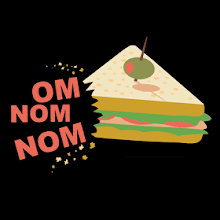
Looking back, I remembered back in my childhood days on how i was so fascinated about bugs - although i am terrified of them. All those books, those mags and all those pitfall traps i set around the house which annoyed my parents.
Recently, I came across an old gift from my dad. it was a book. Ants of Sabah. It was an exclusive book, one that you cant buy in stores. Its issued to forestry officers and my dad decided that i should have it.
Somehow, i tried to re-live those childhood days by doing a field research on a common species of bugs around my home. Ants. Or specifically, the Kerengga.
Oecophylla Smaragdina or the Weaver Ant ( also known as the Kerengga) is one of the most common and conspicouos species of ant in Southeast Asia. They can be found at the fringes of lowland forests, inside forests and most importantly, your backyard. These ants are relatively large, with its body length up to 8mm long, and they are exclusively arboreal. Arboreal means that these ants live on plants and trees; as opposed to epigaeic (lives on ground surface, sometimes underneath soil) and subterranean (obviously underground). The workers are orange or rusty red in colour while the queens (surprisingly and unusually) are green in colour. Green is an unusual colour among ants. I had once managed to obtain a queen (by coincidence) and it is amazingly beautiful. It has a green velvety shine to its body. When observed from a top-down view, it looks like a piece of jewelery, with emeralds and gold linings crafted into the shape of an ant. The males of this species are black and they can be seen during mating seasons (the time when they swarm towards sources of light at night, annoying).
Beautiful the queen is, it is also known - need I remind you - that the Weaver Ants are considerably aggressive, if not as aggressive as the dangerous Fire Ants. Recently, I had myself swarmed when came in close contact with a large nest. The countermeasures that I have taken: squealing, running, jumping, flailing and flapping my arms against my clothes. O.Smaragdina does not sting like some species of ants but the bites produced by its strong mandibles are quite painful, which is then intensed by irritating secretion from its mandibular glands. Its abdomen can also release formic acid which also can cause irritation to our skin. I picked one with tweezers and teased it into biting. When it's mandibles snap, you could hear a small clicking sound produced on contact. Powerful. Quite powerful. Don't let yourself be swarmed.
So far I have found at least six nests around the perimeter of my home. Most of the nests are built on our mango trees. It is observed that the mango tree provides these ants with abundant food supply - but they do not feed on the fruits, rather from other pests and the sap oozing from the bark. The leave - which are large, flexible, and clustered - allows them to build and expand their nests. The Weaver Ants "weave" their nest using silk produced by their larvae. Its is not the larvae that constructs the nest, however. The worker carries the larvae around like a living spindle, back and forth while they secrete strands of sticky silk. I believe that the construction of communal silk nests is the key to the success of the Weaver Ant or Kerengga, aside from being aggressive. Success refers to their ability to be abundant across the region. These ants are very resourceful and are capable of construction nests in many locations.
Its ferocious nature contributes much to agriculture. It has the most potential use as a biological control agent against pest on mango, coconut and cocoa trees because it attacks pests while not compromising the quality of the produce.



2 comments:
BEWARE! The kerengga's urine is poisonous, too, you know. Especially if it gets into your eyes.
-Ibrahim.
I wouldnt exactly say "poisonous". Its a secretion of formic acid from their abdomen which may cause mild irritation to the skin.
Yea, dont get em in ur eyes. Its way too itchy....
Post a Comment